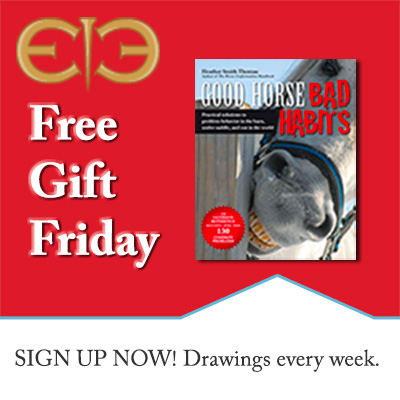Health & Education
We all want the best care possible for our horses. The Heath & Education section covers both Learning Institutions, Organizations as well as many sources for equine assistance including Veterinarians and Farriers.
For those who want a to formally study horses, the Education section includes College Riding, Equine Studies, and Veterinary Schools. Learn about the wide variety of horses in the Horse Breeds section. Supplements and Treatments Therapy are also included in the section.
Everyone can learn from Fine Art and there are some specialty Museums that might surprise you.
Horses as a therapy partner enrich the lives of the disabled. These facilities are listed in our Therapeutic Riding section. To help children and young adults build confidence and grow emotionally, please see the resources available on the Youth Outreach page.
Looking for a place to keep your horse? You can find it in the Horse Boarding section. Traveling? Find a Shipping company or Horse Sitting service if your horse is staying home!
Want to stay up to date with the latest training clinics or professional conferences? Take a look at our Calendar of Events for Health & Education for the dates and locations of upcoming events.
Do we need to add more? Please use the useful feedback link and let us know!
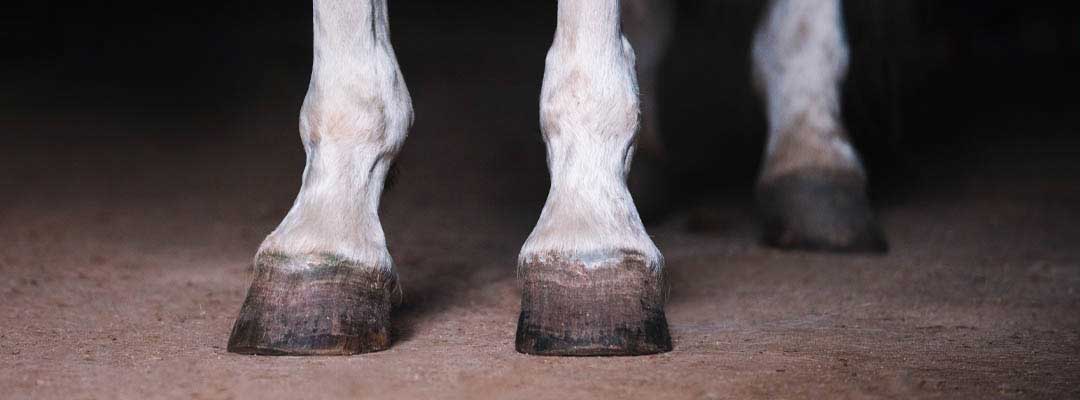
Help support healthy hooves with these insights.
Regular hoof care is of upmost importance to your horse’s well-being and performance, whether you’re an avid competitor or weekend trail blazer. For insights on hoof care and answers to some common questions, we visited with Valley Vet Supply Technical Service Veterinarian, Tony Hawkins, DVM.
For a healthy horse, hoof care is important. But, why?
“If their hooves are not well-maintained, horses can have significant stress on their ligaments, including the suspensory ligament, which can cause prominent lameness issues,” warns Dr. Hawkins. “Proper hoof care also helps address cushioning and proper biomechanics of the horse; anytime we throw that off, horses can be predisposed to conditions like navicular syndrome -- a degenerative condition of structures within the horse’s heel, often leading to chronic forelimb lameness.”
How often do horses need their hooves trimmed?
Horse hoof trimming needs will differ depending on the individual horse, and even the time of year. With this in mind, a good rule of thumb is to trim or shoe a horse every six to eight weeks. A University of Minnesota Extension report authored by Mary Boyce, DVM, states, “The horse’s hooves grow slower in the winter,” and during this time a trim or new set of shoes may only be needed every six to 12 weeks.
Do horses need to be shod?
Some horses need shoes on them. Horse owners will need to consider conditions both at home and when traveling, such as when standing on hard concrete and gravel, which can make horses more tender-footed.
Hoof boots are becoming all the more popular, with great designs like Easyboots for horses.
What is the common hoof ailment, thrush in horses, and how does one recognize it?
Dr. Hawkins says, “Thrush is a mixed bacterial, fungal infection of the horse’s frog (triangular in shape, extending mid-heel to toe). Thrush happens when horses’ hooves get wet and stay wet for extended periods. Their soft tissue of the hoof becomes weak and the bacteria, which is just naturally present in the environment, can invade that susceptible tissue, causing an infection further into the frog sulcus area. If we don't stay on top of it, thrush can become a huge problem before we really even realize there is one. If we have thrush issues, and wet conditions, we really need to focus on getting horses to a dry area. That's going to be a very important part of their therapy. You can put all of the products on it possibly that you want, but if we don't dry out that tissue, we may not see a successful treatment response.”
Thrush in horses’ hooves can cause them to be sore and tender-footed. If the horse isn’t treated, the condition can be drastic. The condition is especially prevalent during seasons with more rainfall. Shop thrush medication.
What causes hoof cracks in horses?
The culprit of hoof cracks in horses, according to the University of Minnesota Extension, includes dry or inconsistent weather and rainfall, extended trimming intervals and poor hoof health. Learn about the different kinds of hoof cracks and how to prevent them.
How can hoof supplements help?
A horse’s hoof health benefits from specific ingredients in hoof supplements, including Biotin, Iodine, Methionine and Zinc.
Dr. Hawkins says, “Hoof supplements help support the right level of vitamins (most importantly, Biotin), minerals and nutrition that support strong, healthy hoof growth. In return, that's going to help prevent issues, such as hoof cracks, and support strong laminar attachments to help horses avoid laminitis and founder issues.”
When should horse owners involve their veterinarian?
“Getting a veterinarian's input is valuable when it comes to challenges impacting the hoof,” Dr. Hawkins said. “Many hoof issues can preface systemic disease processes; getting a complete physical exam on the horse will help rule that out. For example, laminitis is considered a sign of Cushing's disease, also known as PPID (Pituitary Pars Intermedia Dysfunction), which is the most common hormonal disorder affecting horses and ponies. If it's severe enough, their veterinarian could recommend getting some radiographs of the leg and lower foot, which would be valuable information for their farrier to have and best correct the problem.”
Continue reading about horse hoof health in this Q&A with a longtime farrier. Shop hoof supplements available from veterinarian-founded ValleyVet.com.
This article originally appeared on Valley Vet and is published here with permission. Valley Vet Supply was founded in 1985 by veterinarians for people just like you - people who want the very best for their four-legged friends and livestock.
All photos courtesy of Valley Vet.
There are more informative articles in our section on Health & Education.
The EIE Amazon Store also offers great products for Hoof Care. Check it out!
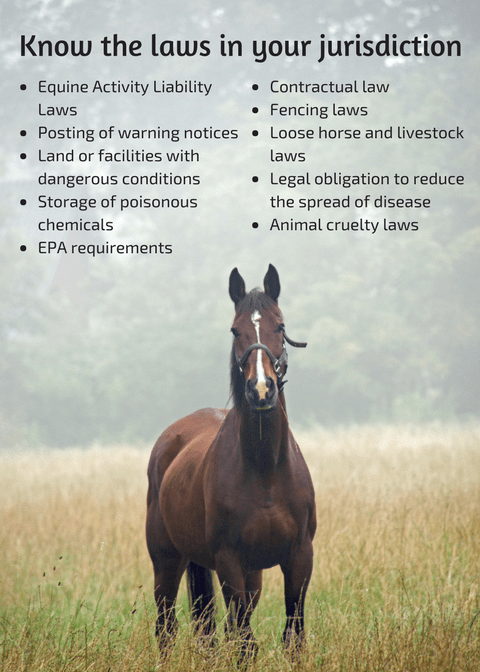
By By Jill Montgomery
Most riders are well aware of the risks that come with horseback riding. According to a study published by the National Institutes of Health, one in five riders (20%) will suffer a serious horse-related injury that requires medical care or hospitalization. In addition, an equine professional such as a riding instructor, may face legal action if someone is injured in their care. We should all pause for a moment to consider exactly what that means. However, there is a lot we can do, and that we should be doing, to manage the risks in equine activities.
Equine professionals should create an environment where clients can enjoy their program and have the necessary tools to make their experiences with horses safe; this leads to repeat customers and more business. Conversely, the old adage “bad news travels fast” is never truer than when a client is injured in your riding program, and it could damage your reputation.
With such a broad range of potential problem areas, you may ask, “Where do I start?”
Key areas for managing risk in a horse program include:
- The horse’s training and suitability for the activity,
- The education and expectations for the participants behavior
- The education and expectations for the behavior of staff;
- The equipment used in the equine activity; and
- The environment in which the activity takes place.
Ensure that your well-trained staff and clients practice safety every day with every interaction with a horse or another rider. Train your horses to accept the tasks asked of them calmly and obediently. Check tack and equipment every time it is used, and repair or replace damaged equipment. Plan for and create policies for dealing with environmental risks.
The equine professional must also constantly educate participants about equine behavior and continually identify, assess, and analyze risks associated with the services they offer. However, even with good management, training, and preparation some equine behaviors are largely unpredictable and can cause injury to a client. Unpredictable behaviors such as bucking, shying, rearing, bolting, tripping, or stumbling are collectively referred to as inherent risks.
Legal Liability
Almost all states now have limited liability statutes to offer protection from legal liability for the inherent risks of equine activities. While these laws don’t prevent injured parties from suing, they are very helpful to defendants and limit the complaints to the exceptions in the law, which vary by state. Equine professionals need to know their specific state laws. However, despite these statutes, the best defense is to take practical steps to avoid injuries.
Risk management in regards to legal action can be described as a three-legged stool, and removing any of the legs from this stool leaves you in an unstable position. These three legs include:
- Acknowledgement of Risk or Liability Waiver—More than just a release of liability, this document should educate the client about the risks they may be exposed to in your program. Your attorney and insurance company should review and sign off on the language. Everyone in your operation that comes into contact with horses should be taught the material and be asked if they understand it before they sign. Keep the signed document as a permanent record.
- Liability Insurance—Ensure the activities in your operation are adequately covered with insurance. To find the correct policy, work with an insurance professional who understands your operation.
- Refrain from Negligent Behavior—Negligence is an exception in every state’s statutes. Be familiar with the laws in your jurisdiction that effect your program. Know what your community expects from you as a service provider. Build a culture at your facility that is safety aware using training, procedures, and policies. Post barn rules so everyone sees them and can enforce them. Document your safety efforts.
Identifying Risk Scenarios
One technique for prioritizing risk management is assessing the relationship between the likelihood (frequency) of a risk and the severity of the damage if it occurs. Identify the high frequency risks in your program and always be prepared to handle them should they occur. Examples of risk scenarios ranked using frequency versus severity, include:
- The Barn Fire—Any barn fire can be catastrophic. However, if you have a disaster and emergency plan in place, it could save lives and reduce the amount of damage.
- A Loose Girth/Cinch—This type of tack failure, as well as others, could result in the saddle slipping and/or a fallen rider. Yet, this type of incident is avoidable. Always check if the saddle is off center or if it has moved forward or backward from its normal position before having a rider mount. You can also reduce this risk by adjusting the cinch as needed, adding breast collars for increased stability, and by helping the rider to stay centered on the horse.
- Horse Steps on Handler’s Toes—This is one of the most common risks, although it’s often not severe. Teach your horses to be respectful of their handlers’ space and teach handlers to be aware of the potential for crushed toes and to wear proper footwear.
In Summary
Providing clear and consistent messaging to your clients and staff about your safety policies and practices will help build a safety-conscious culture and create a foundation for your horse program’s continued success.
About the Author Jill Montgomery is CEO of JRAM Enterprises, Inc., Equine Business Consulting. She is also a CHA Certified Instructor, CHA Certified Equine Facility Manager, and a Region 9 Director. JRAMenterprises.com.
This article originally appeared on Certified Horsemanship Association and is published here with permission.
There a more informative articles in our section on Health & Education.
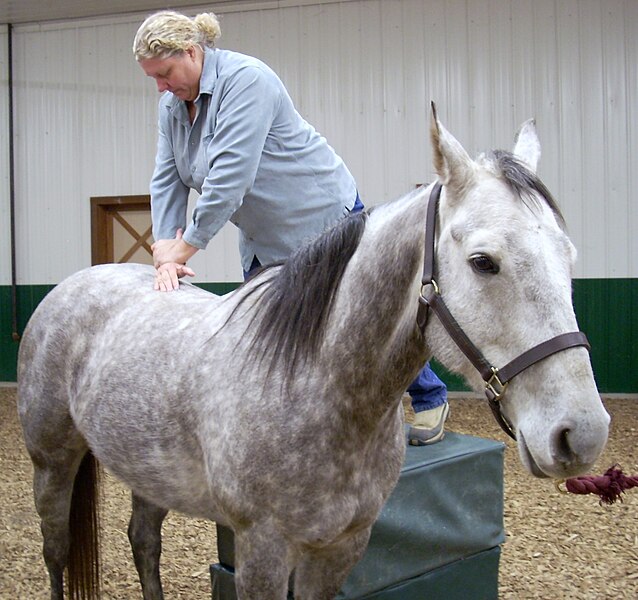
A horse chiropractor is a veterinarian who specializes in treating a horse's musculoskeletal, neurological, joint, and skeletal disorders. They use controlled force to improve a horse's movement and function, and to reduce pain.
Some signs that a horse may need chiropractic care include:
- Poor performance
- Stiffness or lameness
- Pain in the neck, back, or tail
- Abnormal posture
- Discomfort when saddled
- Difficulty bending to one side
Equine chiropractors use a type of manual therapy called equine chiropractic. This involves applying short, high velocity, low amplitude thrusts to specific regions of the horse's body. The goal is to change the horse's joint structures, muscle function, and neurological reflexes.
To become an equine chiropractor, you must first earn a Doctor of Veterinary Medicine (D.V.M.) or a Doctor of Chiropractic (D.C.) degree. After that, you can attend an advanced education program to become an animal chiropractor.
Horses with heavy workloads or those being shown may need to see an equine chiropractor every three weeks. Horses that are used for pleasure riding or are in less intense training may only need to see a chiropractor every three months.
How do I know if my horse would benefit from chiropractic care?
Horses that may benefit from chiropractic care may present with many signs, the most common of which is pain. Horses with back pain often express this in their posture or in their refusal to work. A horse’s attempts to compensate for the pain by changing its posture and way of going can result in other problems such as joint problems.
The following symptoms in a horse may indicate pain:
- Reduced performance
- Abnormal posture
- Snapping and pinning back its ears when being saddled
- Insubordination when being ridden
- Attempting to free itself by throwing its head back or up or by hollowing the back
- Swishing its tail and pinning back its ears
- Disobedience when jumping
- Difficulties with collected or lateral gaits
- Changes in behavior
- Frightened or painful facial expression
- Sensitivity to touch
Alterations of the spine can affect muscle coordination and mobility of the horse, thereby causing decreased performance. The following signs may occur:
- Unleveled gait rhythm
- Irregularity of gait which cannot be assigned to a particular leg or gait
- Stiffness when the horse leaves the stable
- Stiffness when bending and in its general posture
- Muscular atrophy
- Difficulty engaging the hindquarters
- Shortened stride in one or more legs
- Overall decreased range of motion in gait
- Difficulty flexing the poll
- Lameness
- Horse pulls against one rein
- Rider is seated off center due to the horse
- The back does not swing
Photo credit Dr Dennis Eschbach, CC BY-SA 3.0
Chiropractor - Education- Chiropractor - General Information
- Chiropractor - Providers - International
- Chiropractor - Providers - United States
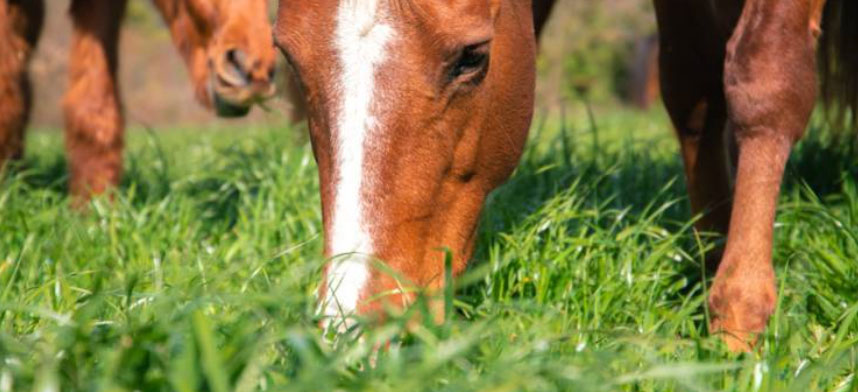
Photo courtesy of Kentucky Equine Research By Kentucky Equine Research Staff
Horse owners are often advised to manage obese horses with caloric restriction, which typically includes limiting access to pasture. Because grazing, access to free-choice exercise, and social interactions all allow horses to express normal behaviors, researchers are now wondering if there is a way to restrict pasture access without affecting welfare?*
Obese horses have an increased risk of metabolic syndrome characterized by insulin dysregulation. In turn, horses with increased levels of circulating insulin are at risk of developing hyperinsulinemia-associated laminitis, a painful and life-threatening condition of the feet.
“Weight management is by far the most important and most widely recommended approach to managing insulin dysregulation and obesity,” explained Ashley Fowler, Ph.D., a nutritionist for Kentucky Equine Research. “However, restricting grazing with muzzles or drylots can sometimes be difficult for owners to implement due to lack of available land for sacrifice areas or because some horses are incredibly clever at removing their grazing muzzles.”
When given the chance, horses spend about two-thirds of their day grazing, and according to veterinary researchers, grazing is a “central and innate facet of equine behavior.”*
Restricting grazing may lead to frustration as well as problematic or abnormal behavior, including aggression and stereotypic behaviors.
Two systems are often recommended for restricted grazing:
- Strip grazing, which involves limiting horses to a specific grazing area that is increased in size over time by moving fencing to reveal ungrazed grass.
- Track systems that involve creating a track around the perimeter of the grazing area that can be gradually increased in size.
To determine the effects of these two restricted grazing systems on behavior of outdoor-living ponies, researchers used 24-hour electronic surveillance and GPS data loggers attached to a halter to track activity levels. Data was collected over four weeks.
Key findings included:
- Ponies spent most of their time grazing regardless of the system;
- More ponies showed agonistic behavior (i.e., conflict or fighting) in the strip grazing system than ponies in the track system; and
- Ponies moved significantly more in the track system. “This could be due to a more enriched environment, less competition over resources or improved social cohesion,” said the research team.
“This research highlights the potential benefits of a track system on weight management, by both limiting grass access and encouraging more movement,” explained Fowler.
“Regardless of which method horse owners use to limit pasture access for weight management, horses fed calorie-restricted diets should still be fed a vitamin-mineral supplement or ration balancer to ensure daily dietary requirements are met,” advised Fowler.
*Kirton, R., I. Sandford, E. Raffan, S. Hallsworth, O.H.P. Burnam, and R. Morgan. 2024. The impact of restricted grazing systems on the behaviour and welfare of ponies. Equine Veterinary Journal:14411.
Read more: Observing Horse Behavior in Restricted Grazing Scenarios
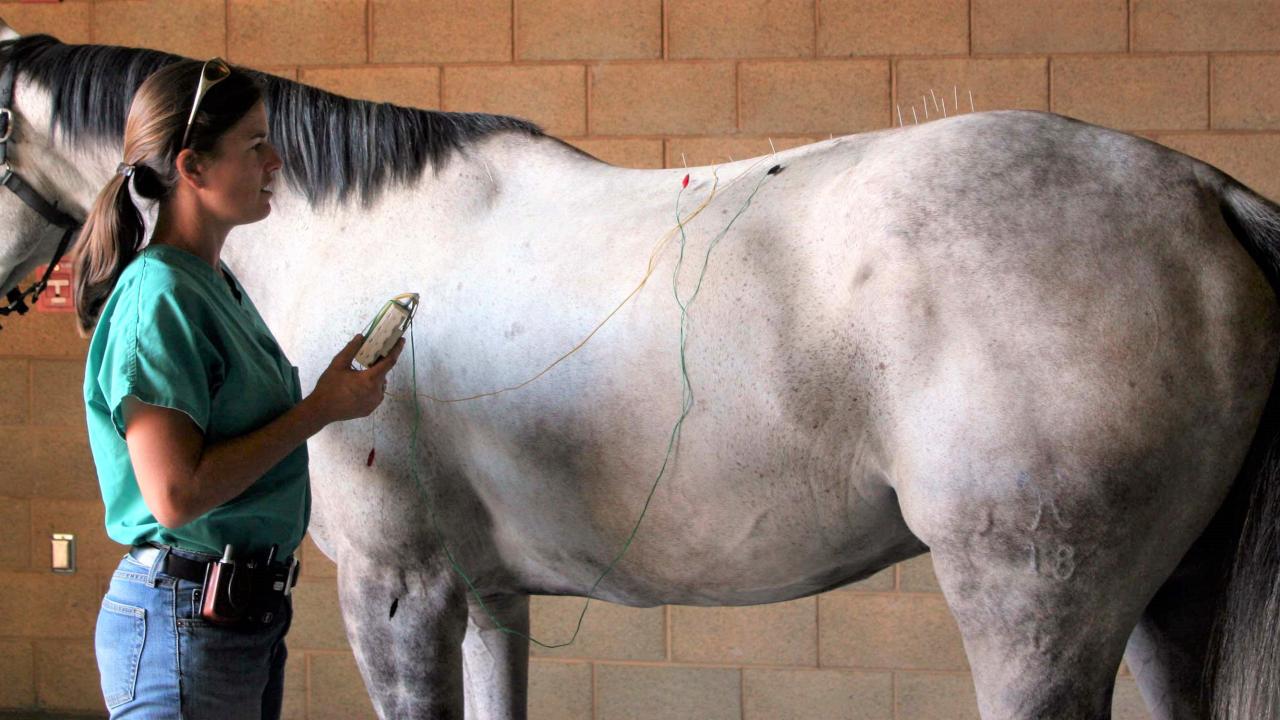
Photo Credit UC Davis Veterinary Medicine Acupuncture has been used to treat various medical conditions in humans and animals for more than 3,000 years. Horses were among the first animals treated with acupuncture due to their importance in warfare and farming. Today, equine acupuncture is commonly incorporated in the treatment of a number of conditions, especially musculoskeletal disorders and back pain.
The ancient Chinese discovered and described hundreds of acupuncture points (acupoints) in humans and animals. Modern research shows that acupoints are located in areas with a high density of free nerve endings, mast cells, small arterioles and lymphatic vessels. Stimulation at acupoints induces the release of beta-endorphins, serotonin and other neurotransmitters and can produce local, remote, and/or systemic effects. The use of acupuncture for pain relief is well supported by modern research studies. The effects of acupuncture on internal organs and on “balancing” the body as a whole are less understood, and more research is necessary to fully explain this ancient therapy.
The benefits of acupuncture have been widely recognized and integrated into Western veterinary and human medical practices. In November 1997, the National Institutes of Health (NIH) convened a panel of scientists to review the effectiveness of acupuncture. The result was the first formal endorsement of acupuncture by the NIH, stating: “There is sufficient evidence of acupuncture’s value to expand its use into conventional medicine and to encourage further studies of its physiology and clinical value.”
Acupuncture is a sought after treatment by horse owners due to its demonstrated safety and minimal unwanted side effects. It is well tolerated by most horses and provides a drug-free approach to address musculoskeletal pain that can enhance equine performance. This is particularly attractive for competitors who must adhere to show association-mandated prohibited substance policies. Aside from the needles, acupuncture does not require any specialized equipment, making it easier to perform in a variety of environments than some traditional methods.
Acupuncture can be used for a wide variety of issues.
Acupuncture can be extremely useful for pain. Besides pain relief, acupuncture may also have an impact on inflammation, which is ideal for horses with acute injuries and arthritis. It's thought that, by helping to return the nervous system to homeostasis, acupuncture may also help with the immune system and many other organ systems.
Your horse may also benefit from acupuncture's ability to increase microcirculation. This refers to the circulation of blood through your horse's smallest blood vessels -- the venules, metarterioles, terminal arterioles, and capillaries. They're located throughout your horse's body including in his or her organ tissue and stimulation of increased circulation can lead to improved wound healing, improvements in laminitis, and other great benefits.
Acupuncture for horses is a therapeutic technique that involves inserting fine needles into specific points on a horse's body to treat a variety of conditions:
- Pain relief: Acupuncture can help reduce pain and inflammation.
- Improved function: Acupuncture can help restore function to the body.
- Muscle relaxation: Acupuncture can help relax or stimulate muscles.
- Decreased swelling: Acupuncture can help decrease swelling.
- Organ function: Acupuncture can help affect organ function.
Acupuncture is a safe procedure when performed by a qualified veterinarian. It's often used in conjunction with other conventional veterinary treatments.
Here are some things to know about acupuncture for horses:
- Acupoints
There are 173 acupuncture points in animals, and each meridian has multiple acupoints. - De-Qi
When a needle is inserted, the patient experiences a sensation called "De-Qi" that indicates an acupoint has been stimulated. - Treatment plan
The number, size, and length of needles used is determined by observing the De-Qi reaction. - Treatment time
Some results can be seen immediately, but others may require several treatments. - Combination therapy
Acupuncture can be combined with medications such as local anesthetics or anti-inflammatories.
Photo Credit Photo Credit UC Davis Veterinary Medicine.
Acupuncture - General Information- Acupuncture - Education
- Acupuncture - Providers
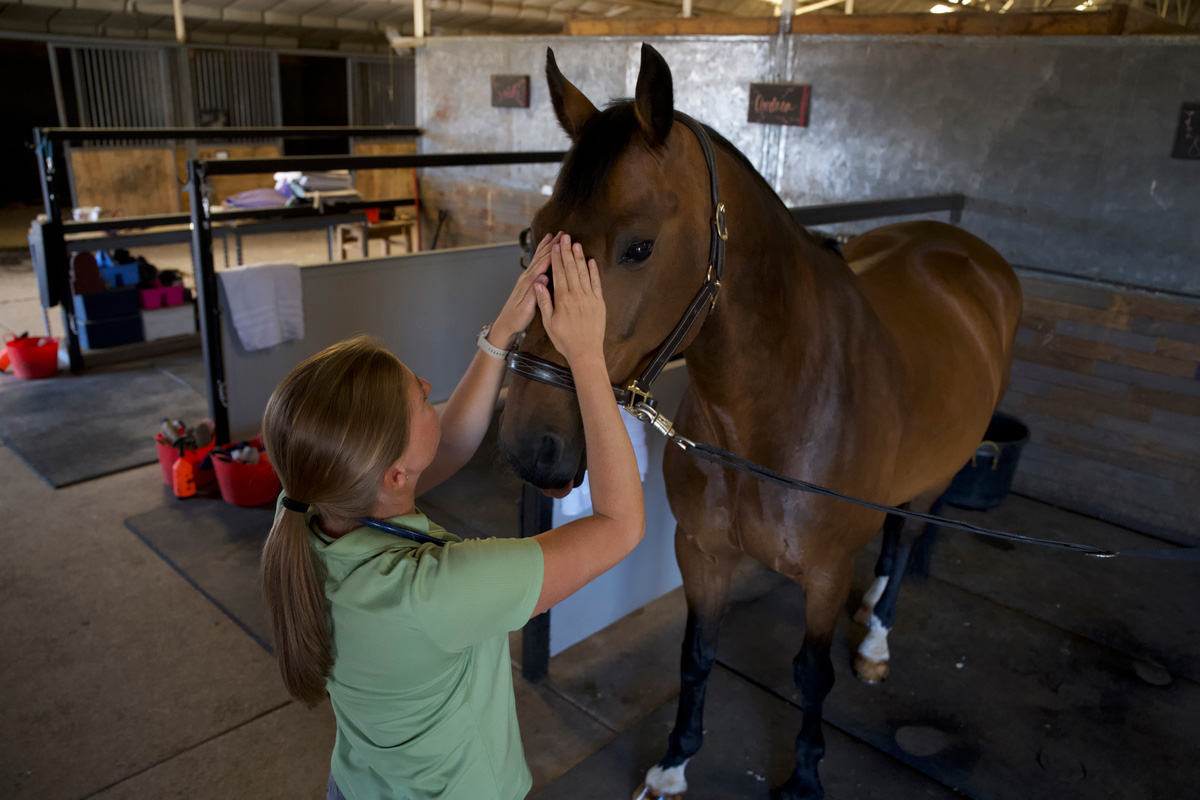
Image courtesy of Boehringer Ingelheim Animal Health Time is of the essence to improve chances of recovery
While horse owners have likely heard of Equine Protozoal Myeloencephalitis (EPM), fortunately, less than one percent of the horse population will develop the disease. The impact of this neurologic disease can be devastating, though, so it is important that horse owners know how to identify a potential case of EPM, how the diagnosis is made, the prognosis for recovery and how to manage the environment to help prevent EPM.
How Horses Contract EPM
EPM is most commonly caused by the protozoal parasite Sarcocystis neurona, which is transmitted to horses when they ingest food or water that has been contaminated with opossum feces. A less prevalent way horses can contract the disease is through the protozoal parasite Neospora hughesi. Very little is known about how this parasite is transmitted to horses.
What EPM Looks Like
Dubbed “the great pretender,” EPM presents in a variety of ways in horses. According to Amy Polkes, DVM, DACVIM, an equine internal medicine specialist and owner of the consultation service Equine IMED, clinical signs can range from mild to severe. It can be anywhere from a change in performance under saddle with weakness, tripping, and/or muscle loss to a horse that is acutely recumbent (down).
Other clinical signs a horse owner might observe include, but are not limited to:
- Muscle atrophy, most often asymmetrical
- Ataxia (lack of coordination or abnormal gait, often more pronounced in the rear hind limbs)
- Tripping, toe dragging, locking stifles, difficulty picking up correct lead, “bunny hopping” with hind legs
Diagnosing EPM
According to Dr. Polkes, if a horse owner notices any of these signs, it is important to have a veterinarian evaluate the horse as EPM can be progressive and early treatment is important for success. If there is a suspicion of neurologic disease, Dr. Polkes says, “It is very important to have a thorough neurologic evaluation by someone with advanced training, such as an internal medicine specialist or a veterinarian proficient in this area.”
During a neurologic evaluation, the veterinarian will assess proper nerve function and movement. The exam starts with observation of general behavior and body condition, with attention to any observed muscle atrophy. Next, a cranial nerve exam is performed to assess the function of the nerves around the head and neck, including vision, eye movement, tongue tone and specific responses to stimuli. During the active portion of the exam, the veterinarian will observe the horse walking in straight lines, circles and over different surfaces, checking for gait abnormalities such as toe dragging, stepping on themselves or losing their balance. Strength and coordination can be assessed with the “tail pull” exam by pulling the horse’s tail while they are walking forward. Proprioceptive deficits are common in horses with neurologic disease; they often are unaware of proper foot placement and may adopt a base-wide or base-narrow stance or leave a leg in a very abnormal and unnatural position. Dr. Polkes states, “A neurologic evaluation is the most important step in the diagnosis, as there must be neurologic deficits present for the diagnosis to be EPM.”
Diagnostic testing includes serum and cerebrospinal fluid (CSF) for antibodies to Sarcocystis neurona (or Neospora hughesi). A CSF tap can sometimes be done at the barn, or the veterinarian may want the horse transported to a clinic. The procedure is well tolerated with few complications and can provide important information for a more definitive diagnosis.
The presence of antibodies in serum only confirms exposure, but not necessarily active disease, as there are some areas of the country with high exposure, and those horses are likely to be positive on serum. The level of the serum antibody also does not determine the likelihood of disease, a positive test at any level only confirms exposure but a negative test makes it unlikely to be EPM. The most accurate test for active infection is to submit both cerebrospinal fluid (CSF) and serum together. The serum and CSF are both tested for antibodies, and a ratio is performed to determine if there is evidence of antibody production in the spinal fluid.
Diagnostic testing and treatment should only be done in horses with neurologic deficits and clinical signs consistent with EPM. Testing for EPM should not be part of an annual health check-up or pre-purchase examination.
Prognosis for Recovery
EPM can be treated with MARQUIS® (15% w/w ponazuril), which is administered as a paste. In general, about 66 percent of horses will either recover completely or well enough to be a pasture pet and about 33 percent will not respond well to treatment or have permanent issues from protozoal damage.
“I have had some great successes with treatment,” says Dr. Polkes. “A recent case responded so well to treatment with MARQUIS that he was back in the show ring within six months!”
Dr. Polkes says there are things horse owners can do to help manage the opossum population around their farms, such as keeping food sealed and stored properly, not leaving cat or dog food in places accessible to opossums, securing and disposing of waste in a timely manner and eliminating clutter.
For more information about EPM, click here.
About Boehringer Ingelheim
Boehringer Ingelheim provides innovation for preventing and treating diseases in animals. The company offers a wide range of vaccines, parasite-control products, and medicines for pets, horses, and livestock to veterinarians, animal owners, farmers, and governments. As a leader in animal health, Boehringer Ingelheim values that the health of humans and animals is deeply connected and strives to make a difference for people, animals, and society. Learn more at www.bi-animalhealth.com
IMPORTANT SAFETY INFORMATION: The safe use of MARQUIS in horses used for breeding purposes, during pregnancy, or in lactating mares has not been evaluated. In animal safety studies, loose feces, sporadic inappetence, lost weight, and moderate edema in the uterine epithelium were observed. For use in animals only. Not for human use. Keep out of reach of children.
MARQUIS® is a registered trademark of Boehringer Ingelheim Animal Health USA Inc. ©2024 Boehringer Ingelheim Animal Health USA Inc., Duluth, GA. All rights reserved. US-EQU-0263-2024
This content originally appeared on Boehringer Ingelheim Animal Health and is published here with permission.
You can find more interesting stories in our section on Health & Education.
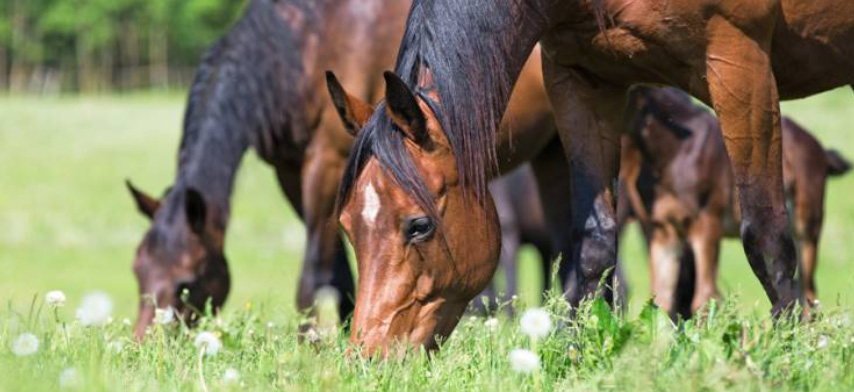
Photo courtesy of Kentucky Equine Research By Kentucky Equine Research Staff
In Arthur Conan Doyle’s The Hound of the Baskervilles, the renowned fictional detective Sherlock Holmes assesses the quality of a portrait by stating simply, “I know what is good when I see it.” For some horsemen, high-quality pasture may be viewed in the same way—difficult to describe but easy to identify.
What attributes separate high-quality pasture from middling or poor pasture? Some characteristics include species and growth stage of plants, density of desirable plants, weed population, and presence and extent of sacrificial areas. These barren areas are often found around feeders, waterers, or fencerows because of high traffic.
Pasture quality is often intrinsically linked to pasture care. Are soil tests conducted to inform owners how to fertilize? Are pastures mowed and dragged regularly? Are weed-control measures performed?
Kentucky Equine Research prompts horse owners to complete a detailed form when they request a ration evaluation. Every component of a horse’s diet must be depicted accurately. One question asks owners to describe their pastures in one of five ways: drylot, sparse, moderate, lush, or high in oxalates. By knowing the quality of pasture, especially the availability of forage, nutritionists can estimate potential intake levels and the nutrient contribution to the diet.
Drylot. A drylot is any area where horses are turned out and able to move around freely, but the area contains no forage. Drylots are often sand or gravel runs connected to a stall or turnout paddock. A drylot is ideal for horses that must consume carefully regulated diets such as easy keepers or those diagnosed with certain metabolic diseases. Horses with drylot turnout only will be entirely dependent on supplemental forage sources such as hay, chaff, forage cubes or pellets, or alternative fiber sources. If horses spend more than an hour or two in a drylot, forage should be provided to them.
Sparse pasture. Sparse pasture provides some forage for horses, though quality may be poor. The forage may be overmature, which can be determined by the presence of thick stems and seedheads, or it may be yellowing or brown, as in the case of drought-stricken plants. Sparse pasture may be due to overgrazing, which often leads to a flush of weed growth. Sacrificial or loafing areas may start small but spread wider, giving weeds a chance to take a foothold. Sparse pasture may also be due to inappropriate management, such as infrequent mowing, inadequate weed control, or lack of fertilization. This pasture will not support optimal dry matter intake per day but may be appropriate to meet the needs of easy keepers.
Moderate pasture. Moderate pastures may have a mix of grasses interspersed with weeds. Pasture will be unevenly grazed but will have minimal bare spots. Plant height will typically be inconsistent. Moderate pasture generally does not have consistent care with some mowing and minimal or no fertilization. Like sparse pasture, moderate pasture will not support the maximum dry matter intake per day.
Lush pasture. Lush cool-season pasture contains thick stands of grasses with few or no bare areas and even distribution of grazing across the pasture with minimal weed proliferation. Plants are kept at a height of 6-10 inches by regular mowing. This pasture will support maximum rate of dry matter intake. Cool-season grasses grow best during cool, moist periods of the year, such as in spring or autumn. They thrive in the temperature range of 59-77° F. Common cool season grasses include tall fescue, orchardgrass, ryegrass, Kentucky bluegrass, and bromegrass. Warm-season grasses grow best during warm periods of the year, flourishing when temperatures are in the range of 86-95° F. Bermudagrass and bahiagrass are typical warm-season grasses. When grasses are faced with temperatures outside of their ideal range, growth may slow considerably, decreasing yield.
Legumes such as clover, lespedeza, and alfalfa are most often used in pastures as components of mixes with grasses. Both grasses and legumes provide essential nutrients to horses, though legumes will convey more energy and protein as well as certain minerals.
The fifth category, high-oxalate pastures, pertains primarily to horse owners in tropical regions. Oxalates bind calcium in the gastrointestinal tract of the horse, thereby prohibiting its uptake into the bloodstream and its subsequent use throughout the body. Ingestion of these plants is typically not an issue unless they represent a large fraction of available forage or if oxalate-laden plants are more palatable than other species in the pasture landscape. Kikuyu, buffel, pangola, and green panic grasses all are potentially dangerous because of high oxalate levels.

Photo courtesy of Kentucky Equine Research By Kentucky Equine Research Staff
As winter approaches in many areas of the world, horsemen must evaluate the nutrient requirements of their horses. Strictly speaking, water is not a nutrient, though no one can deny it’s imperative for life!
A plentiful, palatable source of water should be available to horses at all times, whether they are kept in stalls, runs, paddocks, or pastures. Because fresh forage is less plentiful in the wintertime, horses often subsist on diets composed largely of dry matter such as hay, grain, and nongrowing forage (pasture plants that have become dormant for the winter). The amount of dry matter consumed has a direct bearing on water requirements. Hay, grain, and nongrowing forage typically contain less than 15% moisture. In contrast, growing forages possess 60-80% moisture. Therefore, when horses are consuming winter rations, which are often chock full of dry matter, water requirements increase substantially. Horses are hardy creatures. Provided with adequate shelter, food, and water, they tolerate wintry elements well. Water can be offered to horses in several ways outdoors.
The option that undoubtedly involves the least amount of hassle is an automatic waterer. Because they are heated (usually by electricity, though sometimes with gas), there is little concern that they will freeze unless temperatures drop precariously low. Despite relatively few problems with automatic waterers, they should be checked once or twice daily to be sure they’re functioning properly.
Troughs should be outfitted with water heaters in late fall. Several types of water heaters are available. Horsemen may want to opt out of using heaters that float, particularly if you have a prankster or two in your herd. Nothing is more alarming than seeing the water heater being hurled from the tank during playtime exuberance.
One of the most popular heaters on the market is made specifically for the durable Rubbermaid stock tanks that have become popular throughout the country. Using the drain plug for installation, the thermostat-controlled heater sits near the bottom of the tank. If the tank is positioned near a fenceline, the electrical cord, which runs from the back of the tank, can be kept safely out of reach of horses.
Before using a heater, inspect it carefully for worn wires and other damage, and be sure it’s working properly. Once the heater has been installed or plunged into the trough, check the water for electrical sensation by placing a bare hand in the water. An accidental shock might scare some horses and back them off the water source indefinitely.
A final word on winter watering: Do not expect horses to eat snow to satisfy their water requirements. They would have to consume considerable snow to fulfill body needs. In addition, do not expect horses to break ice in troughs or tanks to gain access to potable water. Allow your horse to enjoy his winter wonderland, complete with clean, fresh water!
- Enjoy a More Serene Ride
- Lean Times, Lean Horses? Three Easy Ways Purina Can Help
- Purina's MQ Systemiq Probiotic Supplement
- Beyond Expectations - Book Trailer
- Finding My Stride with Therapeutic Riding - An Excerpt from Beyond Expectations
- Celebrity Supporters of the Seen Through Horses Campaign! (1:56)
- On to Safer Pastures: Protecting Horses from Poisonous Plants
- Survey Finds Half of Horse Owners Unaware of Lesser Known Stressors
- Study: Intestinal Microbiome of Foals May Predict Future Racing Success
- Intra-articular Approaches to Osteoarthritis - Cornell Equine Seminar (Oct 2024)
- What to Do When Your Horse Ride Goes Wrong
- ICONS, Renegades, Mavericks, & Forces of Nature - Photographer Drew Doggett’s Latest Series
- A Grand National Melee - An Excerpt from the Novel The Horseman’s Tale by Tom Equels
- Minimally Invasive Surgery in the Abdomen - Cornell Equine Seminar
- Get to know...Mette Moe Mannseth, Master Trainer (11:26) - Horses of Iceland
- Autumnal Horse Care: Six Considerations
- Uncovering Secrets | Seen Through Horses Campaign (2:56)
- We love the American Quarter Horse! Why is it such a popular breed?
- The Power of Horses | Breaking Barriers (5:26)
- Rood & Riddle Stallside Podcast - Leading the Way: Dr Katie Garrett on the Impact of the American Association of Equine Practitioners (28:42)
Our Mission — Serving the professional horse person, amateur owners, occasional enthusiasts and sporting interests alike, the goal is to serve all disciplines – which often act independently yet have common needs and values.
Equine Info Exchange is totally comprehensive, supplying visitors with a world wide view and repository of information for every aspect related to horses. EIE provides the ability to search breeds, riding disciplines, horse sports, health, vacations, art, lifestyles…and so much more.
EIE strives to achieve as a source for content and education, as well as a transparent venue to share thoughts, ideas, and solutions. This responsibility also includes horse welfare, rescue and retirement, addressing the needs and concerns of all horse lovers around the world. We are proud to be a woman-owned business.







